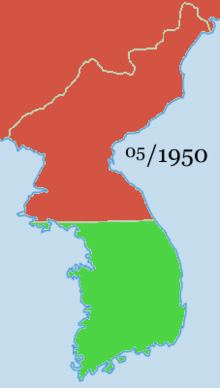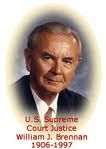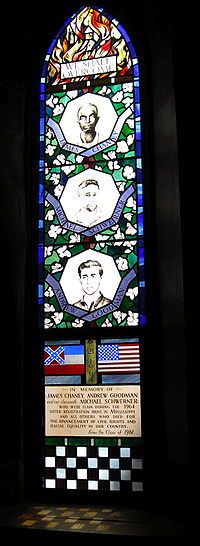This is your morning Open Thread. Pour your favorite beverage and review the past and comment on the future.
Find the past “On This Day in History” here.
Click on images to enlarge.
June 29 is the 180th day of the year (181st in leap years) in the Gregorian calendar. There are 185 days remaining until the end of the year.
On this day in 1928, The Outerbridge Crossing and Goethals Bridge in Staten Island, New York are both opened.
The Outerbridge Crossing is a cantilever bridge which spans the Arthur Kill. The “Outerbridge”, as it is commonly known, connects Perth Amboy, New Jersey, with the New York City borough of Staten Island and carries NY-440 and NJ-440, each road ending at the respective state border.
The bridge was named for Eugenius Harvey Outerbridge (sometimes pronounced “ooterbridge”) the first chairman of the then-Port of New York Authority and a resident of Staten Island. Rather than call it the “Outerbridge Bridge” the span was labeled a “crossing”, but many New Yorkers and others mistakenly assume the name comes from the fact that it is the most remote bridge in New York City and the southernmost crossing in New York state.
It is a steel cantilever construction, designed by John Alexander Low Waddell and built under the auspices of the Port of New York Authority, now the Port Authority of New York and New Jersey, which currently operates it.
It opened simultaneously with the Goethals Bridge on June 29, 1928. Both spans have similar designs. Neither bridge saw high traffic counts until the opening of the Verrazano-Narrows Bridge in 1964. Traffic counts on both bridges were also depressed due to the effects of the Great Depression and World War II.
The Outerbridge Crossing carried 32,438,000 vehicles (both directions) in 2006, or approximately 90,000 each day. Tolls are collected in the eastbound direction only. In early 2009, the cash toll was $8 for passenger vehicles. Users of E-ZPass pay a toll of $6 during off-peak hours (outside of 6-9 am and 4-7 pm).
In 2003, the Port Authority raised the speed limit for the three inner E-ZPass lanes at the toll plaza from 15 mph to 25 mph, separating these lanes from the rest of the eight-lane toll plaza by a barrier. Two years later, the tollbooths adjacent to the 25 mph E-ZPass lanes were removed and overhead gantries were installed with electronic tag readers to permit E-ZPass vehicles to travel at 45 mph in special high-speed lanes.[9] Motorists using the high-speed E-ZPass lanes cannot use the Page Avenue exit, which is located immediately after the toll plaza.
In recent years, the bridge has undergone numerous repair jobs as a result of the high volume of traffic that crosses the bridge each day.
The Goethals Bridge connects Elizabeth, New Jersey to Staten Island (New York City), near the Howland Hook Marine Terminal, Staten Island, New York over the Arthur Kill. Operated by the Port Authority of New York and New Jersey, the span was one of the first structures built by the authority. On the New Jersey side it is located 2 exits south of the terminus for the New Jersey Turnpike-Newark Bay Extension. The primary use for this bridge is a connection for New York City to Newark Airport. The bridge has been grandfathered into Interstate 278, and named for Major General George Washington Goethals, who supervised construction of the Panama Canal and was the first consulting engineer of the Port Authority.
A steel truss cantilever design by John Alexander Low Waddell ], who also designed the [Outerbridge Crossing. The bridge is 672 ft (205 m) long central span, 7,109 feet (2,168 m) long in total, 62 feet (19 m) wide, has a clearance of 135 feet (41.1 m) and has four lanes for traffic. The Port Authority had $3 million of state money and raised $14 million in bonds to build the Goethals Bridge and the Outerbridge Crossing; the Goethals bridge construction began on September 1, 1925 and cost $7.2 million. It and the Outerbridge Crossing opened on June 29, 1928. The Goethals Bridge replaced three ferries and is the immediate neighbor of the Arthur Kill Rail Bridge. Its unusual mid-span height was a requirement of the New Jersey ports.
Connecting onto the New Jersey Turnpike, it is one of the main routes for traffic between there and Brooklyn via the Staten Island Expressway and the Verrazano-Narrows Bridge. Until the Verrazano-Narrows Bridge was completed in 1964 the Goethals Bridge never turned a profit. The same happened to the Outerbridge Crossing. The total traffic in 2002 was 15.68 million vehicles.

 On this day in 1919,
On this day in 1919, 


 On this day in 1957, the U.S. Supreme Court rules that obscenity is not protected by the First Amendment.
On this day in 1957, the U.S. Supreme Court rules that obscenity is not protected by the First Amendment.
 On this day in 1944,
On this day in 1944, 


Recent Comments